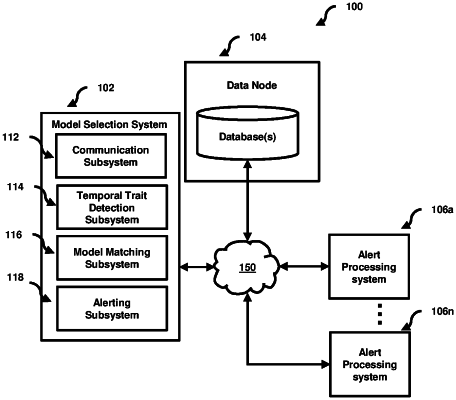| CPC G06F 16/215 (2019.01) [G06F 16/211 (2019.01)] | 20 Claims |

|
1. A system for detecting anomalies in timeseries datasets based on temporal traits, the system comprising:
one or more processors; and
a non-transitory computer-readable storage medium storing instructions, which when executed by the one or more processors cause the one or more processors to:
receive a timeseries dataset, the timeseries dataset comprising a plurality of values for a plurality of timestamps;
determine a temporal trait associated with the timeseries dataset, wherein the temporal trait identifies a pattern within the timeseries dataset, the pattern indicating a trend, heteroskedasticity, seasonality, or an approximate constant;
select, based on the temporal trait, from a plurality of anomaly detection models, an anomaly detection model for detecting anomalies in the timeseries dataset, wherein each model of the plurality of anomaly detection models is trained, using training data classified under a corresponding temporal trait, to process datasets for the corresponding temporal trait;
generate multiple sets of unique parameter values, wherein each set of unique parameter values comprises unique parameters as compared with another set of unique parameter values;
fit the anomaly detection model with each set of parameter values to generate a plurality of fitted instances of the anomaly detection model;
compute a distribution of anomalies resulting from each fitted instance of the plurality of fitted instances;
select a set of parameter values for model execution based on a highest probability resulting from the distribution of anomalies computed based on fitting the anomaly detection model with each set of unique parameter values from the multiple sets of unique parameter values;
input the timeseries dataset and the set of parameter values into the anomaly detection model;
receive, from the anomaly detection model, one or more anomalies associated with the timeseries dataset;
generate an alert based on the one or more anomalies; and
transmit the alert to an alert processing system.
|